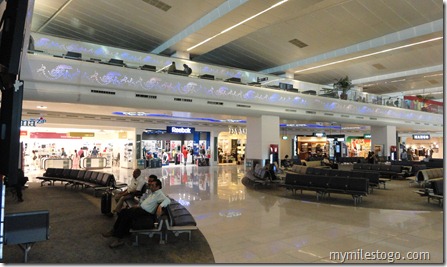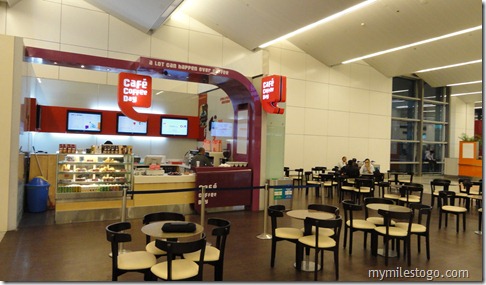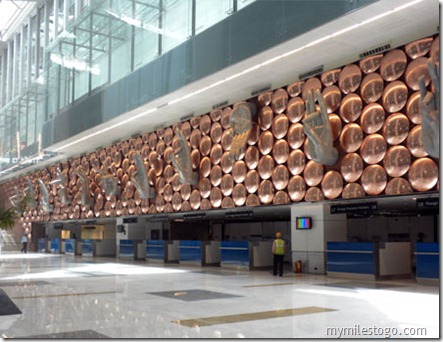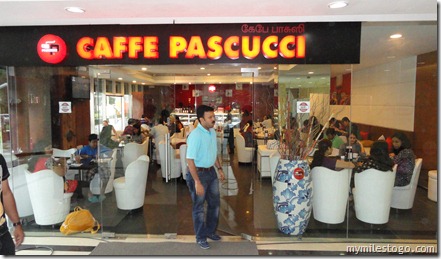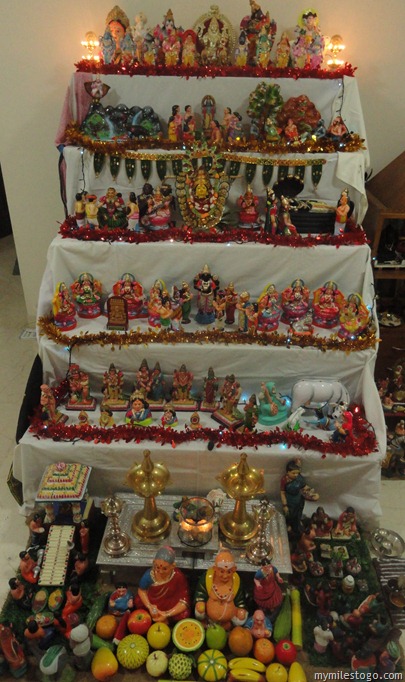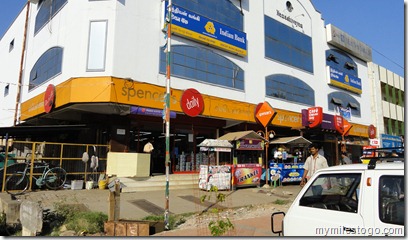Despite my request thrice, the staff of India’s first class airline forgot to sell me sandwiches and muffin, my first and most important meal of the day – Breakfast, while I was flying from Bangalore to Delhi (on work) last week. My first request was placed around 25 minutes after take-off, and I waved at her two times thereafter, but to my dismay and surprise, she seemed to have forgotten till the flight landed… And it was a 2.5 hour flight! Was it pure negligence or arrogance or forgetfulness – I don’t know, but for sure, a lost opportunity. What I may, if allowed can call “unselling”. In our (Retail) business, a lost consumption opportunity can never be recovered. After all, a breakfast meal (to the same person) cannot be served for lunch or dinner! On a quick calculation, I was stunned to note the business opportunity of selling on board – if, for example, an airline flies 100 flights a day, with an average of 100 pax per flight, and a 25% conversion @ Rs. 120 per person, it amounts to Rs. 3 lakhs per day or Rs. 100 crore per annum in topline! Well – that’s the potential opportunity and it all depends on how best the airline staff are able to sell. However, what the airline then needs are not air hosts and hostesses but air- salesmen and saleswomen! but why not? The airlines haven’t yet spotted this as an important opportunity (I Guess so, lest she would have sold my muffin!) and I am sure this is one market that F&B players cannot and shouldn’t miss. With minimum dwell time at airports (time spent between security checks and boarding), and with a healthy >25% conversion of pax at F&B outlets across Indian airport terminals, I wonder why this opportunity cannot be real. It is, indeed.
(Suggested Reading: Travel Retail and Luxury Retail at Airports)
Over the last weekend, India’s most consumed newspaper Times of India carried 20-30 page supplements across all major cities, most of which were advertisements by Retailers and Brands wooing shoppers to choose their respective locations and products while shopping this Diwali. Prominent advertisers included large retailers such as The Future Group (Pantaloons, Big Bazaar, Food Bazaar, Central Malls, EZone, Home Town), Shoppers Stop, Lifestyle, Croma, Reliance Retail, etc. What was interesting was most Retailers were promoting “bill value” based promotions – a clear tactic to entice shoppers to spend a little extra – what we popularly call as “Upselling”. This could be on and off the ground – while advertisements promote the idea, it is the sales’ staff who finally “close the sale’ and hence are the messengers by the Retailers to convince shoppers to spend more. Unsurprisingly, sales grew between 25% – 45% across various Retail stores. Electronics and Furniture took centre stage this time (specifically for promotions) while apparel and accessories including Jewellery, Watches, etc. were assumed to be sure-shot purchases for the festive season.
(Suggested Reading: Consumer Driven)
Upselling is an art, taught and trained to Retail staff right from the time they join in their roles and all through their career. It’s a bit like negotiation, pushing customers to buy more. While this is expected of every staff towards every customer who walks into the store, it is emphasized especially during festive times to increase the bill values – the amount spent by a customer on his / her shopping bill.
Gift Vouchers
While “gifts” of a certain perceived value are given away if the customer achieves a certain amount of bill, other tactics have also been used over time – gift vouchers being the most common one. The advantage with gift vouchers is that the shopper has to return back to the store once again and encash it or utilize the voucher for part-payment and that too, within a certain time frame. The average amount spent over and above the value of Gift Vouchers ranges between 20-35% and goes up to 70% in some cases. They are also transferable, and can hence be passed on to loved ones. This festive season, Reliance Trends is providing coupons worth Rs. 3,000 for a shopping value of the same amount.
(Suggested Reading: Gift Vouchers)
By-Products
This is a smart tactic used, especially in the Electronics business. While a battery charger and headphones are in-built with the original packaging (in most cases), the retailer or the brand could throw in an additional accessory, say a screen guard or a Bluetooth ™ headset along with a mobile phone! Instead of providing a cheap one, Samsung upsells with a Samsung Bluetooth™ headset for just Rs. 500 (MRP Rs. 899) at select retail stores including at Ezone and 50% off on other accessories for its Galaxy Tablet. Great way to engage shoppers to spend more!
Buy One Get One
An age-old tactic to upsell, this is the most common (yet boring) phenomenon one can find. Giordano offers another wrist watch when you buy one! Works well for couples who want a new one for themselves but the designs may be limited. However, it also works as a worthy gift. Last year, I bought an Esprit ladies watch as a gift and I got myself a fabric-strap sporty watch from Puma which I use while cycling. Needless to say, one can always find utilities how to use the free product.
Scratch and win!
Some Retailers offer a promotion scheme where every shopper who attains a certain bill value gets to scratch a card (or crush a fortune cookie) and wins a gift as mentioned in it. The gifts may range from gift vouchers to small home utensils to accessories or even a motor bike or a car or a house! The excitement in this case is pretty high, with each shopper hoping to win something big. Atleast, there is no disappointment that one didn’t get the big fish! SPAR, world’s largest F&B Retailer is offering a similar proposition to enable more shoppers to buy more!
(Suggested Reading: National Shopping Day!)
Shop and win!
Central Malls, India’s largest Mall chain is offering a Toyota Etios (car) and a Harley Davidson (Motorbike) to be won when you shop and participate in a lucky draw! By far, the most exciting, tried-and-tested promotion globally to attract shoppers. An average middle class shopper, irrespective of whether he / she owns a car or a bike (no matter how many) wouldn’t decline an offer to own one more, especially if it is free of cost. The only catch – the winner has to pay road taxes and insurance, which may cost a few thousands. However, this sort of promotion, a raffle to say is among the ones that excite shoppers the most. Airports worldwide, including Singapore, Dubai, Heathrow, Frankfurt etc., offer luxury and high-end cars to be won for a few bucks that is spent at their airport shops. No matter, what – people buy! And buy more, and in this case, upselling just works.
(Also Read: Central Realigns the City!)
Diwali is gone, but the offers are still on! Festivals would come and go buy upselling continues. Retailers must spend a lot of time encouraging their staff to upsell, rather to talk to potential customers, to begin with. These days, many shop assistants feel they are paid to stand (there are well-dressed mannequins already) and usually talk with each other but move to a corner when a shopper walks by. Store Managers would do well for themselves if they lead by example. I have done so, many years back encouraging shoppers to buy bread when they come to buy their morning milk, to try a new range of ketchup when they are looking for noodles at Foodworld.
It’s possible. Just needs a bit of push. By each of us! Happy Selling… errr… Upselling…
